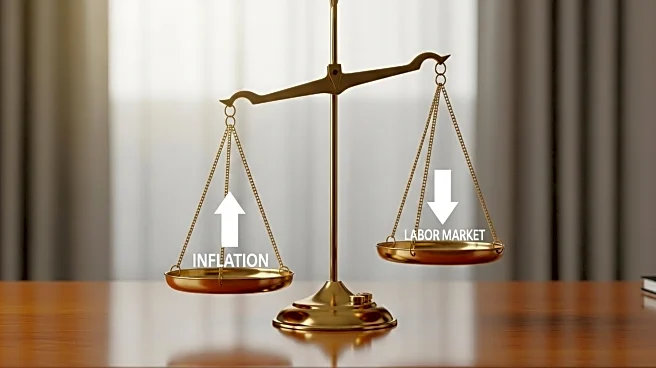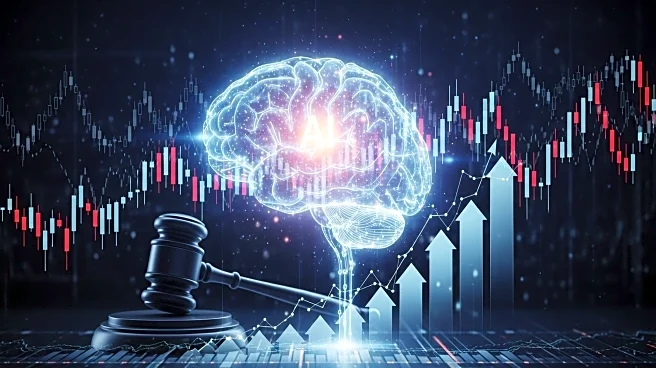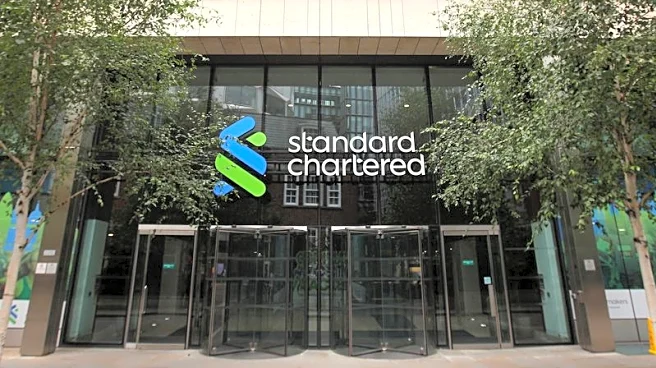What is the story about?
What's Happening?
The S&P 500 ETF (SPY) and the Nasdaq 100 ETF (QQQ) closed positively on Monday, driven by increasing expectations of a 50 basis point rate cut at the upcoming Federal Open Market Committee (FOMC) meeting on September 16-17. The probability of such a cut has risen to 11.8% from 0% earlier, according to CME's FedWatch tool. This potential rate cut is seen as a response to signs of a weakening labor market. The New York Fed's August Survey of Consumer Expectations indicated a decline in job-finding confidence, while the Conference Board Employment Trends Index fell to its lowest since 2021. Additionally, recent nonfarm payroll data showed a significant shortfall in job creation, with only 22,000 new jobs in August against an expectation of 75,000. Moody's chief economist Mark Zandi has warned of a 'jobs recession,' with some states already experiencing economic downturns.
Why It's Important?
The potential rate cut by the Federal Reserve is significant as it could stimulate economic activity by reducing borrowing costs for businesses, potentially leading to increased investment and hiring. However, the weakening labor market raises concerns about the overall health of the U.S. economy. A 'jobs recession' could impact consumer spending, which is a critical driver of economic growth. The situation also affects financial markets, as evidenced by the decline in the 10-year Treasury yield and mortgage rates. Stakeholders, including businesses and policymakers, are closely monitoring these developments, as they could influence future economic policies and market strategies.
What's Next?
The upcoming FOMC meeting will be crucial in determining the Federal Reserve's next steps. A rate cut could provide temporary relief to the economy, but the underlying issues in the labor market may require more comprehensive policy measures. Businesses and investors will be watching for any signals from the Fed regarding future monetary policy directions. Additionally, further economic data releases will be critical in assessing the trajectory of the U.S. economy and labor market.
AI Generated Content
Do you find this article useful?















